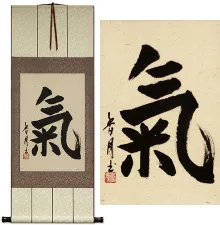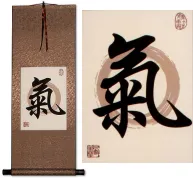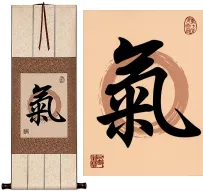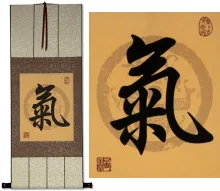Custom Spiritual Energy Chinese or Japanese Calligraphy Wall Scroll
Personalize your Spiritual Energy artwork for a special handmade wall scroll - delivered in a few weeks.
This in-stock artwork might be what you are looking for, and ships right away...
Gallery Price: $300.00
Your Price: $109.88
Gallery Price: $65.00
Your Price: $39.88
Gallery Price: $90.00
Your Price: $49.88
Gallery Price: $90.00
Your Price: $49.88








